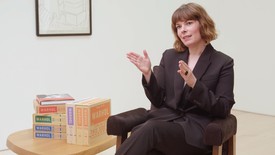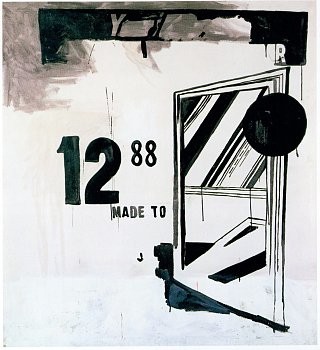Extended through August 31, 2023
About
It was the perfect time to think silver. Silver was the future, it was spacey—the astronauts wore silver suits. And silver was also the past—the Silver Screen—Hollywood actresses photographed in silver sets. And maybe more than anything, silver was narcissism—mirrors were backed with silver.
—Andy Warhol
Gagosian is pleased to announce Andy Warhol: Silver Screen, an exhibition of three early paintings by Andy Warhol from 1963, organized for the gallery by Jessica Beck, formerly of the Andy Warhol Museum, Pittsburgh.
Sixty years ago, in the summer of 1963, Warhol was thinking as both painter and filmmaker, producing silkscreened canvases with multiple images. This was when he received his first camera (a 16mm Bolex that he later used for the Screen Tests, cinematic portraits of friends and “superstars”) and his paintings began to mirror the repetitions of filmstrips. At the same time, Warhol worked in a leaky former firehouse on the Upper East Side, eventually hiring poet Gerard Malanga to complete some of his most significant early silkscreened paintings, Disasters, Silver Elvis, and Silver Liz. A year later, Warhol moved to a larger space on East 47th Street. There, lighting designer turned assistant and photographer Billy Name lined the interior in foil and spray paint, creating a reflective environment for happenings, performances, films, and art production. The Silver Factory was born.
C’était le moment idéal pour penser argenté. L’argent était l’avenir, c’était spatial – les astronautes portaient des combinaisons argentées. L’argent c’était aussi le passé – le grand écran appelé « silver screen » – les actrices de Hollywood photographiées dans des décors argentés. Et peut-être que plus que tout, l’argent c’était le narcissisme – les miroirs étaient doublés d’argent.
—Andy Warhol
Gagosian a le plaisir d’annoncer Andy Warhol: Silver Screen, une exposition composée de trois œuvres des débuts d’Andy Warhol de 1963, organisée à la galerie par Jessica Beck, qui a travaillé au Andy Warhol Museum à Pittsburgh.
Il y a soixante ans, au cours de l’été 1963, Warhol pensait à la fois comme un peintre et un cinéaste, produisant des toiles sérigraphiées composées d’images multiples. C’est à cette époque qu’il reçoit sa première caméra (une Bolex 16 mm qu’il utilisera plus tard pour ses « Screen Tests », portraits cinématographiques d’amis et de « superstars ») et que ses peintures commencent à refléter les répétitions des bandes de film. Au même moment Warhol travaillait dans une ancienne caserne de pompiers qui prenait l’eau dans l’Upper East Side. Il engage alors le poète Gerard Malanga pour réaliser certaines de ses peintures sérigraphiées les plus significatives de ses débuts, Disasters, Silver Elvis et Silver Liz. Un an plus tard, Warhol déménage dans un espace plus grand sur la 47e rue Est. C’est là que l’éclairagiste devenu assistant et photographe, Billy Name, recouvre l’intérieur de papier d’aluminium et de peinture aérosol, créant ainsi un environnement réfléchissant pour les happenings, les performances, les films et la production artistique. La Silver Factory était née.
Au moment où Warhol réalise Silver Liz, Elizabeth Taylor incarnait le glamour hollywoodien, mais elle était aussi l’objet de scandales et de maladies. Elle en devenait un sujet parfait pour l’artiste ; sa représentation sérigraphiée de la star de Cleopatra est dérivée d’une photographie publicitaire et fait écho au style audacieux ainsi qu’à la composition carrée de ses sérigraphies de Marilyn réalisées l’année précédente. La toile incarne les intérêts croisés de Warhol pour la peinture et le cinéma.
Ethel Scull incarne la mondaine éponyme qui, aux côtés de son mari Robert Scull, constitua l’une des premières grandes collections américaines d’art pop et minimal. En 1963, Scull demande à Warhol de faire son portrait ; il l’emmène dans les cabines photographiques de la 42e rue, où Scull joue le rôle d’une starlette en devenir. Le portrait Ethel Scull 36 Times a été réalisé à partir de bandes animées et vives des photomatons. Moins connue, la peinture argentée de Warhol représentant Scull transforme l’icône mondaine en icône du grand écran hollywoodien, le ton inégal de ses images suggérant à nouveau le scintillement d’une bobine de celluloïd (Scull était parmi l’un des premiers sujets des Screen Tests de Warhol).
Enfin, dans Tunafish Disaster, Warhol s’intéresse à deux femmes célèbres en raison de l’étrangeté de leur mort causée par des boîtes de thon contaminées. Dans onze peintures issues de la même source, Warhol utilisa un article de Newsweek datant de 1963 qui associait les photographies des victimes à un titre sinistre. Appartenant à la série Death and Disaster, ces œuvres illustrent l’effet anesthésiant des images effroyables diffusées par les médias. Cependant l’œuvre Tunafish Disaster est inhabituelle dans sa mise en avant du titre de l’article et des visages des femmes ; liant ainsi l’œuvre à une histoire distincte tout en soulignant le caractère banal de personnes ordinaires se retrouvant propulsées sous les yeux du public en temps de crise ou de décès. Dans les trois œuvres exposées à Paris, Warhol présente une vision stratifiée des promesses et des dangers de la célébrité.
Presse
Gagosian
press@gagosian.com
Toby Kidd
tkidd@gagosian.com
+44 20 7495 1500
Karla Otto
Ottavia Palomba
ottavia.palomba@karlaotto.com
+33 1 42 61 34 36
#AndyWarhol
Artist
Press
Gagosian
press@gagosian.com
Toby Kidd
tkidd@gagosian.com
+44 20 7495 1500
Karla Otto
Ottavia Palomba
ottavia.palomba@karlaotto.com
+33 1 42 61 34 36
Andy Warhol: Silver Screen
In this video, Jessica Beck, director at Gagosian, Beverly Hills, sits down to discuss the three early paintings by Andy Warhol from 1963 featured in the exhibition Andy Warhol: Silver Screen, at Gagosian in Paris.
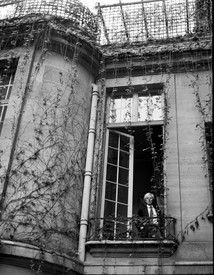
In Conversation
Christopher Makos and Jessica Beck
Andy Warhol’s Insiders at the Gagosian Shop in London’s historic Burlington Arcade is a group exhibition and shop takeover that feature works by Warhol and portraits of the artist by friends and collaborators including photographers Ronnie Cutrone, Michael Halsband, Christopher Makos, and Billy Name. To celebrate the occasion, Makos met with Gagosian director Jessica Beck to speak about his friendship with Warhol and the joy of the unexpected.
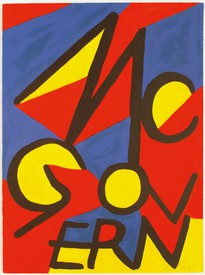
The Art History of Presidential Campaign Posters
Against the backdrop of the 2020 US presidential election, historian Hal Wert takes us through the artistic and political evolution of American campaign posters, from their origin in 1844 to the present. In an interview with Quarterly editor Gillian Jakab, Wert highlights an array of landmark posters and the artists who made them.
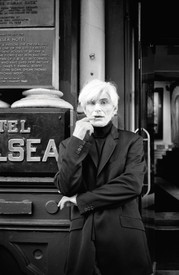
I’ll Be Your Mirror: Allen Midgette
Raymond Foye speaks with the actor who impersonated Andy Warhol during the great Warhol lecture hoax in the late 1960s. The two also discuss Midgette’s earlier film career in Italy and the difficulty of performing in a Warhol film.

Andy Warhol: From the Polaroid and Back Again
Jessica Beck, the Milton Fine Curator of Art at the Andy Warhol Museum, Pittsburgh, considers the artist’s career-spanning use of Polaroid photography as part of his more expansive practice.
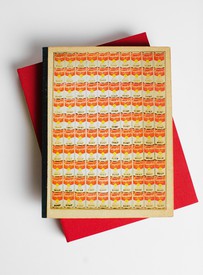
Book Corner
On Collecting with Norman Diekman
Rare-book expert Douglas Flamm speaks with designer Norman Diekman about his unique collection of books on art and architecture. Diekman describes his first plunge into book collecting, the history behind it, and the way his passion for collecting grew.


![Installation view with Andy Warhol, Silver Liz [Studio Type] (1963) Artwork © 2023 The Andy Warhol Foundation for the Visual Arts, Inc./Artists Rights Society (ARS), New York. Photo: Thomas Lannes](https://gagosian.com/media/images/exhibitions/2023/andy-warhol-silver-screen/0sXcLjDtVgfe_585x329.jpg)


![Andy Warhol, Silver Liz [Studio Type], 1963 Silkscreen ink and spray paint on linen, 40 × 40 inches (101.6 × 101.6 cm)© 2023 The Andy Warhol Foundation for the Visual Arts, Inc./Artists Rights Society (ARS), New York. Photo: Rob McKeever](https://gagosian.com/media/images/exhibitions/2023/andy-warhol-silver-screen/SWofl8W5rCuP_585x329.jpg)




